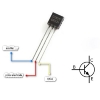- Deutsch
-
EnglishDeutschItaliaFrançais日本語한국의русскийSvenskaNederlandespañolPortuguêspolskiSuomiGaeilgeSlovenskáSlovenijaČeštinaMelayuMagyarországHrvatskaDanskromânescIndonesiaΕλλάδαБългарски езикAfrikaansIsiXhosaisiZululietuviųMaoriKongeriketМонголулсO'zbekTiếng ViệtहिंदीاردوKurdîCatalàBosnaEuskeraالعربيةفارسیCorsaChicheŵaעִבְרִיתLatviešuHausaБеларусьአማርኛRepublika e ShqipërisëEesti Vabariikíslenskaမြန်မာМакедонскиLëtzebuergeschსაქართველოCambodiaPilipinoAzərbaycanພາສາລາວবাংলা ভাষারپښتوmalaɡasʲКыргыз тилиAyitiҚазақшаSamoaසිංහලภาษาไทยУкраїнаKiswahiliCрпскиGalegoनेपालीSesothoТоҷикӣTürk diliગુજરાતીಕನ್ನಡkannaḍaमराठी
TPMS -Sensoren Bedeutung und Funktionalität
- 2024/10/28
- 316
Katalog

Merkmale des Reifendrucküberwachungssystems
Das TPMS -Sensormodul ist ein kompaktes, aber leistungsstarkes Gerät, das mehrere Funktionen ausführt, um eine genaue Reifenüberwachung zu gewährleisten.Es misst den absoluten Druck Innerhalb jedes Reifens, so dass das System zu Der Druck erfassen fällt Innerhalb eines sicheren Bereichs, typischerweise über 101 kPa.Zusätzlich zum Druck überwacht der Sensor die Temperatur innerhalb des Reifens, was dazu beiträgt, mögliche Überhitzungsrisiken zu identifizieren, die zu Blowouts führen könnten.Das Modul verfolgt auch die Beschleunigung innerhalb des Reifens, sodass es die Datenübertragungsraten basierend auf der Fahrzeugbewegung anpassen und damit die Akkulaufzeit erhalten.Im Zentrum des TPMS -Sensors befindet sich ein integrierter Mikroprozessor, der die Rohsensordaten verarbeitet und Entscheidungen darüber trifft, wann der Treiber aufmerksam ist.Ausgestattet mit einem Niederfrequenzempfänger kann der Sensor auch diagnostische Signale empfangen und die Modi nach Bedarf einstellen.
Für die Kommunikation enthält es einen Funkfrequenz -Sender, der drahtlose Reifendaten an das Empfangsmodul des Fahrzeugs sendet, sodass das Dashboard überwacht werden kann.Das Sensormodul wird von einer langlebigen Batterie mit einer Lebensdauer von etwa fünf Jahren angetrieben, um eine zuverlässige langfristige Leistung zu gewährleisten.Der TPMS -Sensor ist auf dem Reifenzentrum über den Ventilstamm installiert und ist so konzipiert, dass er in der anspruchsvollen Automobilumgebung nahtlos funktioniert und Reifendaten für sichereres Fahren bereitstellt.
Wie funktionieren TPMS -Sensoren?
Das TPMS (Reifendrucküberwachungssystem) arbeitet mit einem ausgeklügelten Smart -Sensor -Modul, das mehrere Technologien integriert, um Reifendaten genau zu messen und zu übertragen.Im Zentrum des Sensors befindet sich ein ASIC-Chip (anwendungsspezifischer integrierter Schaltkreis), der verschiedene Sensorfunktionen für Druck, Temperatur und Beschleunigung kombiniert.Dieser Chip wird unter Verwendung von Silicon Micromachining gebaut, auch als MEMS-Technologie (mikroelektro-mechanische Systeme) bekannt, die hochempfindliche und kompakte Sensoren ermöglicht, die der Automobilumgebung standhalten können.Das ASIC enthält zusätzliche Komponenten wie die Batteriespannungserkennung, eine interne Uhr, einen Analog-zu-Digital-Wandler (ADC), eine Probe/Hold-Einheit, einen SPI-Anschluss für den Datenaustausch sowie andere Kalibrierungs- und Datenverwaltungsfunktionen.
Druck- und Temperaturerfassung
Der TPMS-Sensor umfasst einen MEMS-basierten Silizium-Piezoresist-Drucksensor auf MEMS-Basis, der mit einem festen kreisförmigen Siliziumfilm- und Dehnungsmessgeräte ausgestattet ist, die eine Weizensteinbrücke für eine präzise Druckmessung bilden.Diese Struktur ermöglicht es dem Sensor, den physikalischen Druck in ein elektrisches Signal mit hoher Genauigkeit (bis zu 0,01 bis 0,03% FS) umzuwandeln.Um die Reifentemperatur zu messen, hat der Sensor eine Öffnung, die Umgebungstemperatur direkt auf einen Halbleitertemperatursensor einführt und eine gute Temperaturüberwachung bietet, die erforderlich ist, um durch Überhitzung verursachte Reifenausschlägen zu verhindern.
Beschleunigungsemerkennung und Weckfunktionalität
Das TPMS-Sensormodul enthält auch einen MEMS-basierten Beschleunigungssensor.Dieser Sensor erkennt die Bewegung durch Messung der Gewaltveränderungen an einer Masse in Silicon Island, die in der Lage ist, auf und ab zu schwingen.Wenn die Beschleunigung festgestellt wird, stört sie das Gleichgewicht einer anderen Weizensteinbrücke im Sensor und erzeugt eine Spannungsänderung proportional zur Bewegung.Mit dieser Beschleunigungssenkung können die TPMs automatisch „aufwachen“, wenn sich das Fahrzeug bewegt, und die Akkulaufzeit, wenn das Fahrzeug stationär ist.Der Sensor passt die Datenübertragungsintervalle intelligent anhand der Geschwindigkeit an, verringert den Stromverbrauch und verbessert die frühen Warnfunktionen für Reifenprobleme.
Integrierter Mikrocontroller und Signalverarbeitung
Der ASIC-Chip enthält einen eingebetteten Mikrocontroller (MCU) mit 8-Bit-RISC-Architektur zur Verarbeitung der Sensornaten.Die MCU kümmert sich um Signalkonditionierung, Datenkonvertierung und -speicher im Speicher, einschließlich 4K EROM oder Flash für Systemfirmware, 4K ROM für kundenspezifische Anwendungen und 128-Byte-EEPROM für Sensorkalibrierungsparameter.Mit einem ADC, einem niedrigen Verstärker (LNA) und anderen Signalkonditionierungskomponenten stellt der Mikrocontroller sicher, dass genaue Daten an den Empfänger des Fahrzeugs übertragen werden.Darüber hinaus enthält das Modul einen E/A -Port für Kommunikation, Stromverwaltungssysteme und diagnostische Funktionen.
Eindeutiger ID -Code zur Identifizierung
Jeder TPMS-Sensor verfügt über einen eindeutigen 32-Bit-ID-Code, sodass der Empfänger des Fahrzeugs jeden einzelnen Reifen identifizieren kann.Diese eindeutige Identifizierung ist wichtig für Systeme, die mehrere Reifen gleichzeitig überwachen, um sicherzustellen, dass Daten aus jedem Reifen genau aufgezeichnet und auf dem Armaturenbrett des Fahrzeugs angezeigt werden.
Trends in der TPMS -Technologieentwicklung
Die Zukunft der TPMS-Technologie bewegt sich zu integrierten, kompakteren und energieeffizienten Modulen.Unternehmen wie Infineon und GE entwickeln "Drei-in-Eins-" -Module, die Druck-, Temperatur- und Beschleunigungssenkung mit HF-Übertragungsfunktionen zu einem einzigen Chip kombinieren und die Notwendigkeit separater Komponenten verringern.Dieser Trend drängt auch in passive, selbstbetriebene Systeme, die mechanische Energie aus Reifenbewegungen nutzen und möglicherweise die Notwendigkeit einer Batterie beseitigen.Diese Fortschritte zielen darauf ab, das TPMS-Design zu vereinfachen, die Zuverlässigkeit zu verbessern und die Wartung zu verringern und TPMS zu einer kostengünstigeren und nahtlosen Lösung für die Fahrzeugsicherheit zu machen.
Funktionen des Reifendrucküberwachungssystems (TPMS)
Das Reifendrucküberwachungssystem (TPMS) spielt eine wichtige Rolle bei der Fahrzeugsicherheit, indem sie den Reifendruck kontinuierlich überwacht und den Fahrer auf Probleme aufmerksam macht, die zu unsicheren Fahrbedingungen führen könnten.Durch die Erkennung von Druckänderungen hilft TPMS bei der Vorbeugung von Unfällen, zur Verbesserung der Kraftstoffeffizienz und zur Verlängerung der Reifenlebensdauer.Hier ist eine Aufschlüsselung der Hauptfunktionen:
Niedrig -Reifendruck -Alarm
TPMS ist so konzipiert, dass der Druck in einem oder mehreren Reifen unter eine sichere Schwelle fällt.In diesem Fall alarmiert das System den Treiber sofort mit einer Warnung mit niedriger Druck und identifiziert den betroffenen Reifen.Auf diese Weise kann der Fahrer das Problem umgehend angehen und sicherstellen, dass alle Reifen innerhalb des empfohlenen Druckbereichs verbleiben, was für die sichere Handhabung, die Kraftstoffeffizienz und die Langlebigkeit der Reifen unerlässlich ist.
Hoher Reifendruckalarm
Über infliegende Reifen können ebenfalls gefährlich sein, was zu einem schlechten Handling und einem erhöhten Risiko für Reifenschäden führt.TPMs überwacht übermäßig über den Reifendruck und stellt eine Hochdruckwarnung aus, wenn der Druck in einem Reifen die angegebene Obergrenze übertrifft.Auf diese Weise kann der Fahrer die Geschwindigkeit reduzieren oder Korrekturmaßnahmen ergreifen, um potenzielle Ausblässe oder andere reifenbedingte Vorfälle zu vermeiden.
Schnellluftleckerkennung
Wenn ein Reifen einen plötzlichen Druckabfall erfährt, der häufig durch Einstiche oder andere Schäden verursacht wird, kann TPMs diesen schnellen Luftverlust erkennen und eine sofortige Warnung ausstellen.Dieser Alarm mit schnellem Leck ermöglicht es dem Fahrer, schnell zu reagieren, indem er die Richtung des Fahrzeugs steuert und bei Bedarf sicher anhält, wodurch das Risiko von Unfällen verringert wird, die durch eine schnelle Reifendeflation verursacht werden.
System Selbstbeschichtung
Jedes Mal, wenn das Fahrzeug gestartet wird, führt TPMS einen automatischen Selbstprüfungsvorgang durch, um sicherzustellen, dass alle Sensoren und Komponenten korrekt funktionieren.Wenn ein Teil des TPMS -Systems fehlerhaft ist, wird ein Warnlicht aktiviert und bleibt eingeschaltet, bis das Problem behoben ist.Für Fahrzeuge mit mehr als vier Reifen wird für jeden Reifen während des Selbstprüfprozesses zusätzliche Zeit zugewiesen.Diese Funktion hilft sicherzustellen, dass die TPMS selbst zuverlässig und bereit ist, genaue Reifendaten bereitzustellen.
Temperaturwarnung mit hoher Reifenwarnung
Obwohl in allen TPMS -Systemen nicht verfügbar sind, können einige fortschrittliche Modelle zusätzlich zum Druck die Reifentemperatur überwachen.Hohe Temperaturen können dazu führen, dass Reifen überhitzt und das Risiko von Ausblasen erhöht.Wenn die Temperatur eines Reifens einen sicheren Schwellenwert überschreitet (typischerweise etwa 85 ° C), sendet TPMS eine hohe Temperaturwarnung an den Fahrer, was den spezifischen Risiko angibt.Diese Funktion ist bei langen Reisen oder bei heißem Wetter nützlich, sodass die Fahrer langsamer werden und mögliche Reifenversagen verhindern können.
Zusammen machen diese Funktionen TPMs zu einem unschätzbaren Instrument zur Aufrechterhaltung eines sicheren und effizienten Fahrens.Durch die Bereitstellung einer guten Überwachung und sofortigen Warnungen hilft TPMS den Fahrern, vor ihrer Eskalation auf Reifenproblemen zu adressieren und letztendlich die gesamte Fahrzeugsicherheit zu verbessern.
Häufig gestellte Fragen [FAQ]
1. Wie viel kostet es, TPMS -Sensoren zu ersetzen?
Die Kosten für den Austausch von TPMS -Sensoren (Reifendrucküberwachungssysteme) liegen in der Regel zwischen 230 und 750 US -Dollar.Im Gegensatz zu vielen anderen Automobilreparaturen kommt der Hauptaufwand eher aus den Teilen als von der Arbeit.Der Preis für TPMS -Sensoren allein kann erheblich variieren und zwischen 180 und 680 US -Dollar sinken.
2. Können Sie TPMS -Sensoren selbst installieren?
Ja, die Installation von Reifendrucksensoren auf Kappen ist recht einfach.Auch ohne vorherige Automobilerfahrung sollten Sie den Prozess überschaubar finden.Im Allgemeinen schrauben Sie die Sensoren einfach anstelle der vorhandenen Kappen auf die Ventilstämme.
3. Ist es sicher, mit dem TPMS -Licht an zu fahren?
Das Fahren mit dem tpms Licht beleuchtet ist nicht sicher.Wenn dieses Licht während der Straße aktiviert wird, ist es wichtig, langsamer zu werden und zur nächsten Tankstelle oder zum Dienstleistungszentrum zu gehen, um Ihre Reifen zu inspizieren.
Verwandter Blog
-
Netzteilspannung Abkürzung: VCC VDD VEE VSS GND

2024/06/6
Im modernen elektronischen Schaltungsdesign, Verständnis der Abkürzungen der Stromversorgungsspannung (wie VCC, VDD, VEE, VSS, GND).Diese Abkürzung... -
Ein Überblick über TTL- und CMOS -ICs und wie Sie zwischen ihnen wählen

2024/04/13
In diesem Artikel werfen wir einen detaillierten Blick auf zwei wichtige elektronische Technologien, komplementäre Metaloxid-Halbleiter (CMOS) und Tr... -
Verschiedene Arten von Sicherungen und Anwendungen

2024/04/18
Sicherungen sind wesentliche Komponenten in modernen elektrischen Systemen und fungieren als entscheidende Beschützer vor Überstrom.Sie arbeiten, in... -
Verständnis des C1815 -Transistors: Pinouts, Schaltungssymbole, Anwendungsschaltungen

2023/12/20
Welche Art von Röhre ist der C1815?C1815 Triode PinoutC1815 ModellzeichnungC1815 -ParameterC1815 EigenschaftenAnwendung von C1815 Der C1815 -Transist... -
LR44 -Batterien: LR44 -Batterieäquivalente und LR44 -Batterieersatz

2024/01/24
In einem sich schnell entwickelnden technologischen Gebiet, in dem die Größe der elektronischen Geräte weiter schrumpfen und dennoch alltäglicher ... -
Grundkenntnisse über Sicherungen: Merkmale, Arbeitsprinzipien, Typen und wie man richtig auswählt

2024/04/10
Sicherungen schützen Schaltungen vor Schäden aufgrund von Überlastung oder Kurzstrecken.Dieses einfache, aber geniale Gerät basiert auf einem leic... -
Leitfaden zu Buck-, Boost- und Buck-Boost-Konverter

2023/12/21
Was ist ein Buck -Konverter?Wie funktioniert ein Buck Converter?Was ist ein Boost -Konverter?Wie funktioniert ein Boost -Konverter?Was ist ein Auftrie... -
Gesamtzahl der Transistoren in einer CPU

2024/06/14
In der modernen Computertechnologie ist die Beziehung zwischen der zentralen Verarbeitungseinheit (CPU) und den Transistoren zunehmend integraler gewo... -
Grunde elektronische Grundkomponenten verstehen - Widerstände, Kondensatoren, Dioden, Transistoren, Induktoren und digitale Logik -Tore

2024/04/13
Elektronische Komponenten sind der Eckpfeiler des Bauens und der Optimierung elektronischer Schaltkreise.Von gewöhnlichen Haushaltsgeräten bis hin z... -
Beschreiben Sie kurz die Spezifikationen, Verpackungen, das Arbeitsprinzip, die Vorteile und die Umweltauswirkungen von Lithium-Ionen-Batterien

2024/03/20
Seit der Einführung von wiederaufladbaren Blei-Säure-Batterien im Jahr 1859 wurden sie allmählich in den Gewebe des technologischen Fortschritts ei... -
Beherrschen analoge und digitale Schaltungen: Ein Anfängerführer

2023/12/20
Definition und Eigenschaften von analogen Schaltungen und digitalen SchaltungenDer Unterschied zwischen analogen Schaltungen und digitalen Schaltungen... -
Transistor (BJT und MOSFET) Arbeitsprinzipien

2023/12/20
Arbeitsprinzip des bipolaren Junction -Transistors (BJT)Auswahl der KomponentenwerteWie wählen Sie einen Transistor?Arbeitsprinzip von MOSFETWie scha... -
Eine vollständige Liste von Testmethoden für verschiedene Transistoren

2023/12/20
Der Transistor wurde von John Bardeen, William Shockley und Walter Brattain erfunden.Es handelt sich um ein Kollektor-, Emitter- und Basis-Drei-termin...
Heiße Teile
- GRM0225C1E6R3BA03L
- C1608C0G1H682K080AA
- GRM0335C1H7R4DA01D
- GRM1556S1H3R0CZ01D
- TAP336M035CRS
- MSP430F112IPW
- ADG5409BRUZ-REEL7
- IDT7200L20SO
- SN74AHC14PW
- CY62256NLL-70SNXCT
- TPS2421-2DDA
- XC6SLX45-2CSG324I
- LFEC6E-3F484C
- LMC6001AIN
- LM385M3X-1.2/NOPB
- MPZ2012S601ATD25
- 2FI300A-060
- CA0007AM
- SOMC1601-470G
- LM98513CCMT
- KIC7SZ08FU-RTK/P
- LT3957EUHE
- MT28F008B3-10BD
- TMP93CS41DF
- AR8159-S85UDGH0
- MC68EC040FE33
- PC16450CV
- PT7C4050ALE
- AD7775BJR-P94
- LTC3731IUH
- SY88927VKCTR
- DEB3314HLV1.4
- 3F880AXZZ-QZ8A
- CMB02070X2209GB700
- T491T476M006AT4280
- BRX1-0001
- BCM5350KPB2G
- MC33197AP
- ST10F273-B-CAA
- NX-DVR001
- CSTCR6M00G15L99-RO
- SC79990AVH
- 5CSEBA2U19C8N.
- APL5320-33BTI-TRG
- RT3607CEGQW
- AP4800GEM-HF
- 85504-5001
- 1734-IB8


